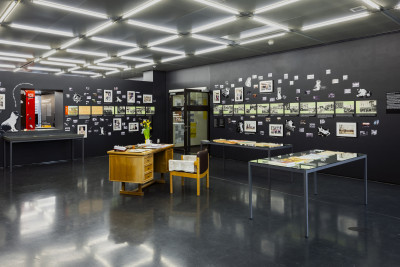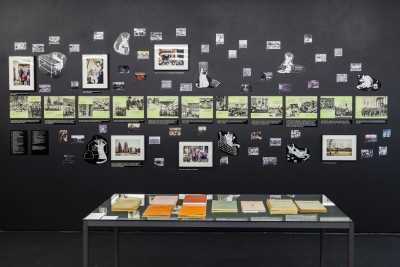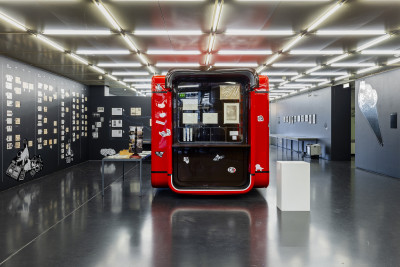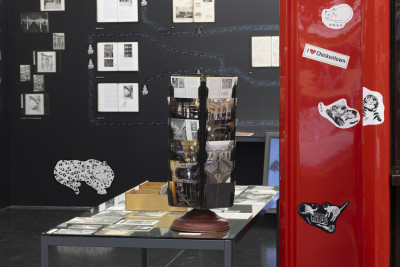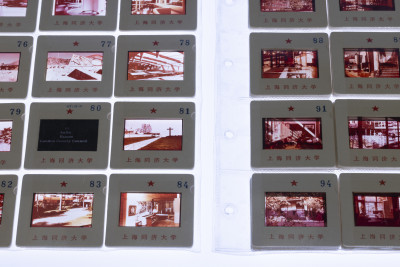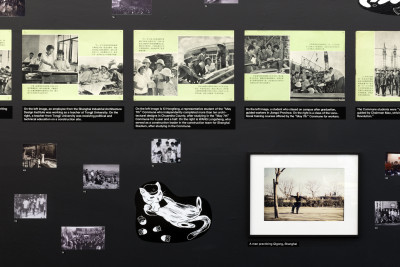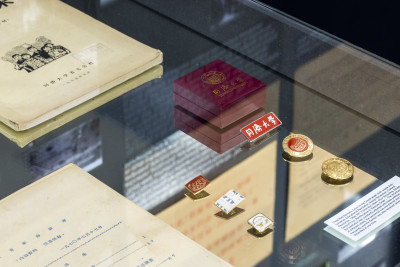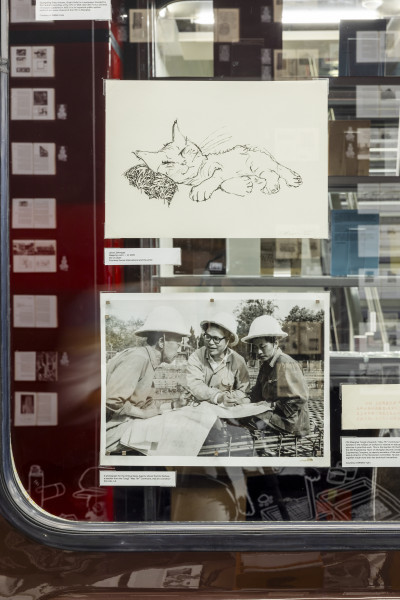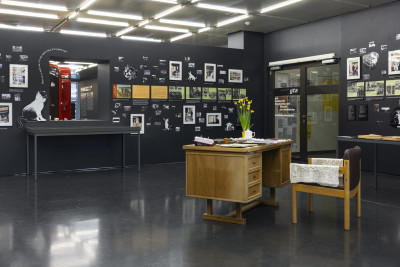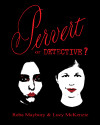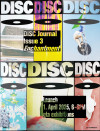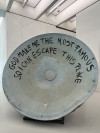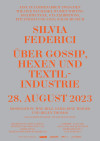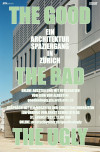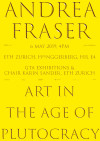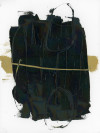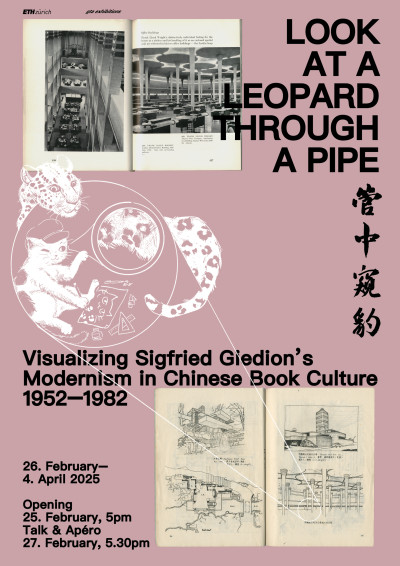
Look at a Leopard Through a Pipe
Visualizing Sigfried Giedion's Modernism in Chinese Book Culture 1952–1982
26. Februar – 9. Mai 2025
gta Ausstellungen, ETH Zürich, Foyer
Eröffnung: 25. Februar 2025, 17:00 Uhr
Mit Beiträgen von _ao_ao_ing ensemble, Chickentown, WANG Jie, WANG Yulin, ZHANG Yuanyuan und Urban Zellweger
Kuratiert von WANG Yulin mit LU Di, YANG Jun, ZHANG Tian und gta Ausstellungen; akademische Betreuung von Laurent Stalder, LU Yongyi und QIAN Feng
Vortrag und Apéro: 27. Februar 2025, 17:30 Uhr
Mit Matthew Critchley, Almut Grunewald, Andreas Kalpakci, LU Yongyi und Laurent Stalder
Diskussion mit Daniela Ortiz dos Santos, Reto Geiser, Sebastiaan Loosen und anderen
Hinweis: Ausstellung vom 31. März bis 3. April wegen Umbau geschlossen
Die „moderne“ Architektur wurde in China Ende des 19. Jahrhunderts eingeführt und ersetzte nach und nach traditionelle Bauweisen. Mit der Rückkehr chinesischer Architekt*innen, die ab den 1920er-Jahren in Japan, Europa und den USA studiert hatten, entwickelten sich Architektur und Bauingenieurwesen zu eigenständigen Disziplinen. Infolgedessen begannen verschiedene Institutionen, Kurse zur chinesischen und westlichen Architekturgeschichte anzubieten.
Im Jahr 1952 wurde die Tongji-Universität im neuen China zu einer technischen Hochschule umstrukturiert und ein eigenständiges Architekturdepartment eingerichtet. Dieses beinhaltete eine spezialisierte Abteilung für Geschichte (und Theorie) der Architektur.
Innerhalb dieser Abteilung wurde unter der Leitung von LUO Xiaowei ein kleines Team zusammengestellt, das sich auf die Architekturgeschichte „westlicher“ und anderer ausländischer Länder konzentrierte. Diese Gruppe erarbeitete eine Reihe von Lehrbüchern und internen Referenzmaterialien, die darauf abzielten, architektonische Narrative innerhalb eines marxistischen und maoistischen Rahmens neu zu konstruieren. Das Material behandelte nicht nur die antike und klassische Architekturgeschichte, sondern auch die moderne Architektur, die aus marxistischer Sicht kritisch betrachtet wurde. In den 1950er- bis 1970er-Jahren, unter dem Einfluss der „Drei Revolutionen“ und sogar innerhalb der radikalen Organisationsform der „7. Mai“-Kommune an der Tongji-Universität, widmete sich diese Gruppe der Anwendung radikaler Pädagogik auf die Architekturgeschichte und -theorie. Dies mündete unter anderem in das nationale Lehrbuch Moderne Architekturgeschichte ausländischer Länder (1982), das von der Tongji-Universität gemeinsam mit drei weiteren Hochschulen herausgegeben wurde und über lange Zeit die Lehre der modernen Architekturgeschichte in China prägte.
Für ihre Forschungen zur Geschichte ausländischer Architektur waren chinesische Lehrkräfte auf westliche Publikationen angewiesen. Sigfried Giedions Space, Time and Architecture wurde zu einer zentralen Quelle für die Analyse der modernen Architekturbewegung, insbesondere in kapitalistischen Ländern, als Reaktion auf Chinas Begeisterung für moderne Architektur. Viele von Giedions Illustrationen wurden in verschiedenen Lehrbüchern der Tongji-Universität verwendet. Je nach Publikationsbedingungen in den jeweiligen Zeiträumen variierten diese Darstellungen und wurden in ein idealistisches pädagogisches Modell integriert, das eine „bildhafte“ Architekturgeschichte betonte.
Ein chinesisches Sprichwort besagt: „Einen Leoparden durch ein Rohr betrachtend, sieht man nur einen Fleck.“ Die Auseinandersetzung mit Giedions Schriften zur modernen Architekturgeschichte gleicht einem Blick durch sein „Rohr“ auf die westliche Kunst. Die Lehrbücher der Tongji-Universität sammelten, synthetisierten und rekonstruierten diese „Flecken“ gemeinsam mit anderen Flecken. Dieser Prozess war nicht nur Teil der langen Tradition der Wissenssammlung und -übertragung zwischen Kulturen, sondern diente auch der Etablierung eines neuen akademischen Fachbereichs in China.
Die neu zusammengesetzten „Flecken“ schimmerten durch die „Rohre“ der Forschungsabteilung hindurch, indem sie antikes Wissen pragmatisch aufnahmen, eine zwiespältige Haltung gegenüber der Moderne einnahmen und eine panoramische Sichtweise auf die Weltarchitektur anstrebten. Die Ausstellung selbst fungiert ebenfalls als ein solches „Rohr“ – sie gibt einen Einblick in den Prozess der Wissensübertragung und -transformation zwischen Ost und West.
Die in der zweiten Hälfte des 20. Jahrhunderts an der Tongji-Universität entstandenen Lehrbücher waren wie kleine Steine, die in den Denkpool geworfen wurden. Sie zeigten eine direkte Verbindung zwischen architekturhistorischen und theoretischen Studien sowie der praktischen Umsetzung auf. Diese Arbeiten thematisierten organisatorische Strukturen, die (Re-)Produktion historischer Materialien, radikale Pädagogik, den Einfluss visueller Medien, industrielle und architektonische Produktion, Arbeit, Kolonialismus, Umweltfragen und Ressourcen. Trotz erheblicher politischer Hürden beim schweizerisch-chinesischen Wissensaustausch und kulturellen Einflussnahmen wurden diese nicht vollständig untergraben. Angesichts aktueller Krisen in Umwelt, Energie, Wirtschaft, Politik und Architektur hoffen wir, dass diese Steine aus der Vergangenheit noch heute Wellen schlagen.
Mit besonderem Dank an das Team von gta Ausstellungen: Melinda Bieri, Alix Bücher, Flora Bühlmann, Mina Hava, Jakob Darz, Ben Frei, Louis Fritsche, Ella Mathys, Ivana Milenković, Lauro Nächt, Till Kadler, Margaux Koch Goei, Daniel Sommer, Sabine Sarwa und Oli Wyss.
Die Hauptillustration stammt von WANG Yulin und ZHANG Yuanyuan. Die anderen Illustrationen sind von ao_ao_ing ensemble, Chickentown, WANG Jie, WANG Yulin, ZHANG Yuanyuan, LU Di, YANG Jun, Urban Zellweger und ZHANG Tian.
Grafik von Teo Schifferli und Vivien Pöhls
Ausstellungsstücke bereitgestellt von WANG Yulin, ZHANG Tian, gta exhibitions, gta Archiv und Jakob Moritz Becker
